
Guide to Aloe Family Diversity: Types of Succulents
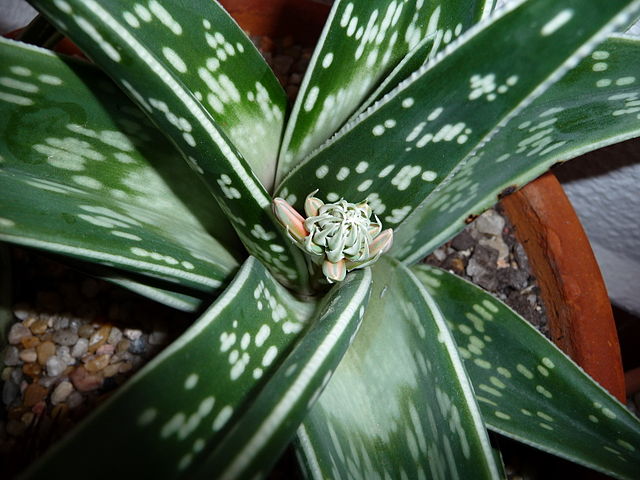
The aloe family, also known as the Asphodelaceae family, is a diverse group of succulent plants that have gained popularity in recent years. With over 500 species, the aloe family encompasses a wide range of plants, each with its own unique characteristics and growth habits. These plants are known for their ability to store water in their leaves, making them ideal for arid environments and low-maintenance gardening.
We will explore the different types of succulents within the aloe family and provide a comprehensive guide for plant enthusiasts and beginners alike. We will delve into the various species and their distinct features, such as the iconic Aloe vera and the stunning Haworthia. Additionally, we will discuss tips on how to care for these plants, including watering, sunlight requirements, and potential challenges that may arise. Whether you are a seasoned succulent collector or just starting your green journey, this article will serve as an informative resource to help you navigate the fascinating world of aloe family succulents.
- There are several types of succulents within the aloe family
- Aloe vera is the most well-known type of succulent in the aloe family
- Other types of succulents in the aloe family include aloe aristata and aloe polyphylla
- Each type of succulent within the aloe family has its own unique characteristics and growth habits
- Aloe vera is known for its medicinal properties and is commonly used in skincare products
- Aloe aristata, also known as lace aloe, has distinctive white spots on its leaves
- Aloe polyphylla, also known as spiral aloe, has leaves that grow in a unique spiral pattern
- Aloe vera and other succulents in the aloe family are easy to care for and require minimal watering
- Succulents in the aloe family can be grown both indoors and outdoors, depending on the climate
- Aloe vera and other succulents in the aloe family make great additions to any plant collection
- Frequently Asked Questions
There are several types of succulents within the aloe family
When it comes to succulents, the aloe family offers a diverse range of options. From small and compact varieties to large and striking plants, there is something for every succulent enthusiast. In this guide, we will explore some of the most popular types of succulents within the aloe family, highlighting their unique characteristics and care requirements.
1. Aloe Vera (Aloe barbadensis)
One of the most well-known and widely cultivated succulents is Aloe Vera. Renowned for its medicinal properties, Aloe Vera is a versatile plant that thrives in arid climates. It features thick, fleshy leaves that contain a gel-like substance known for its soothing and healing properties. This succulent is relatively low-maintenance, making it a favorite among beginners.
2. Haworthia (Haworthia spp.)
Haworthia is a genus of small succulents characterized by their rosette-like growth habit and thick, pointed leaves. These plants come in a variety of shapes, colors, and patterns, making them highly sought after by collectors. Haworthias are perfect for indoor cultivation, as they prefer bright but indirect light and moderate watering.
3. Gasteria (Gasteria spp.)
Gasteria succulents are known for their unique, tongue-shaped leaves with intriguing patterns and textures. These plants are native to South Africa and have adapted to survive in harsh conditions. Gasterias are hardy and can tolerate both low light and infrequent watering, making them ideal for those with less green thumbs.
 Discover Vibrant Ruby Red Succulents: Your Perfect Find
Discover Vibrant Ruby Red Succulents: Your Perfect Find4. Agave (Agave spp.)
Agaves are large succulents that make a bold statement in any garden or landscape. With their rosette-shaped leaves and sharp spines, they add a touch of drama to outdoor spaces. Agaves come in various sizes, from small, compact varieties suitable for pots to towering specimens that can reach several feet in height. These plants require well-draining soil and full sun exposure to thrive.
5. Aloe Aristata (Aloe aristata)
Aloe Aristata, also known as Lace Aloe, is a charming succulent with rosettes of fleshy, toothed leaves. This plant is native to South Africa and is well-adapted to survive in dry conditions. Aloe Aristata produces beautiful coral-colored flowers in the summer, adding an extra touch of beauty to its already attractive foliage. It prefers bright but indirect light and infrequent watering.
- Key takeaway: The aloe family encompasses a wide variety of succulents, each with its own unique characteristics and care requirements. Whether you are a beginner or an experienced plant enthusiast, there is an aloe succulent that will suit your needs and add beauty to your indoor or outdoor space.
Aloe vera is the most well-known type of succulent in the aloe family
Aloe vera is a popular and widely recognized succulent in the aloe family. Known for its numerous health benefits, Aloe vera is a versatile plant that has been used for centuries in various cultures for its medicinal properties.
This type of succulent is characterized by its thick, fleshy leaves that are filled with a gel-like substance. The gel is rich in vitamins, minerals, and antioxidants, making it highly beneficial for skincare, digestion, and overall well-being.
One of the key features of Aloe vera is its ability to retain water in its leaves, allowing it to survive in arid and dry conditions. This makes it a great choice for those who have a tendency to forget to water their plants regularly.
When it comes to care, Aloe vera prefers bright, indirect sunlight and well-draining soil. It is important to avoid overwatering, as this can lead to root rot. Aloe vera is also known for its ability to reproduce through offsets, which are small offshoots that can be separated from the main plant and potted individually.
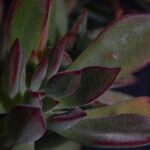 Explore Luxurious Velvet-Leaf Succulents for Your Garden
Explore Luxurious Velvet-Leaf Succulents for Your GardenOverall, Aloe vera is a fantastic succulent to have in your collection due to its numerous benefits and low-maintenance nature.
Other types of succulents in the aloe family include aloe aristata and aloe polyphylla
Aloe aristata, commonly known as the Lace Aloe, is a small succulent plant that belongs to the aloe family. It is native to South Africa and is characterized by its rosette-shaped clusters of triangular, fleshy leaves. The leaves are green and covered with white spots, giving them a lacy appearance, hence the common name.
This type of succulent is popular among collectors and garden enthusiasts due to its unique and attractive foliage. It can grow up to 12 inches (30 cm) in height and produces tubular orange flowers during the summer months. Lace Aloe is relatively easy to care for, making it a great choice for beginners.
Aloe polyphylla, also known as the Spiral Aloe or the Kumara Plicatilis, is a visually striking succulent that is native to Lesotho, a small country in southern Africa. It is famous for its spiral arrangement of leaves, which form a mesmerizing pattern resembling a Fibonacci spiral.
The Spiral Aloe is highly sought after by succulent enthusiasts and is considered a rare species. It requires specific growing conditions to thrive, including well-draining soil, ample sunlight, and proper watering. Due to its unique growth pattern and limited availability, it is often considered a collector's item.
Both Aloe aristata and Aloe polyphylla are fascinating members of the aloe family, each with its own distinctive features and requirements. Whether you are a beginner or an experienced succulent enthusiast, these succulents can add beauty and diversity to your collection.
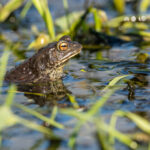 Unveiling the World of Succulent Plants and Their Unique Traits
Unveiling the World of Succulent Plants and Their Unique TraitsEach type of succulent within the aloe family has its own unique characteristics and growth habits
When it comes to the aloe family, there is a diverse range of succulents to explore. From the popular aloe vera to the lesser-known varieties, each type of succulent within this family possesses its own unique characteristics and growth habits.
Aloe Vera
One of the most well-known members of the aloe family is the Aloe vera succulent. Recognized for its medicinal properties, Aloe vera is cherished for its gel-filled leaves that can be used to soothe burns, moisturize the skin, and promote healing. This succulent thrives in warm climates and requires minimal care, making it a favorite among gardeners and plant enthusiasts.
Haworthia
Haworthia is another popular type of succulent within the aloe family. Known for its rosette-shaped leaves and striking patterns, Haworthia plants are visually appealing and can add a touch of elegance to any indoor or outdoor space. These succulents are relatively low maintenance, making them suitable for beginners.
Aloe Aristata
Aloe Aristata, commonly known as Lace Aloe, is a compact succulent with unique triangular leaves adorned with white spikes. This variety is native to South Africa and is well-suited for arid climates. Aloe Aristata produces vibrant orange flowers during its blooming period, adding a splash of color to any garden.
Gasteria
Gasteria succulents, with their thick, fleshy leaves and intricate patterns, are a delightful addition to any succulent collection. These plants are known for their ability to tolerate low light conditions, making them perfect for indoor spaces. Gasteria plants are slow-growing and require infrequent watering, making them ideal for those who prefer low-maintenance plants.
- Key Features: Unique triangular leaves with white spikes
- Growth Habit: Compact, slow-growing
- Preferred Climate: Arid
- Watering Needs: Infrequent
Aloe Polyphylla
Aloe Polyphylla, also known as Spiral Aloe, is a visually stunning succulent characterized by its mesmerizing spiral growth pattern. Native to Lesotho, this succulent prefers cool temperatures and requires careful attention to its watering needs. Aloe Polyphylla is a prized plant among succulent enthusiasts due to its unique appearance and challenging cultivation requirements.
- Key Features: Spiral growth pattern
- Growth Habit: Unique and visually striking
- Preferred Climate: Cool
- Watering Needs: Careful monitoring
Exploring the diverse types of succulents within the aloe family can be a fascinating journey for plant lovers. Each variety offers its own set of characteristics and care requirements, allowing enthusiasts to create stunning displays and unique collections.
 Non-Cactus Succulents: A Guide to Other Succulent Varieties
Non-Cactus Succulents: A Guide to Other Succulent VarietiesAloe vera is known for its medicinal properties and is commonly used in skincare products
Aloe vera, a member of the Aloe family, is renowned for its numerous medicinal properties and is widely utilized in the skincare industry. Its gel-like substance is packed with vitamins, minerals, and antioxidants, making it a popular ingredient in various skincare products.
However, the Aloe family encompasses a diverse range of succulents, each with its own unique characteristics and uses. In this guide, we will explore some of the different types of succulents within the Aloe family.
1. Aloe aristata (Lace Aloe)
Aloe aristata, commonly known as Lace Aloe, is a small succulent characterized by its rosette of triangular, fleshy leaves adorned with white spots and delicate, toothed edges. This variety is native to South Africa and is prized for its ornamental value. It thrives in well-drained soil and requires minimal watering.
2. Aloe brevifolia (Short-Leaf Aloe)
Aloe brevifolia, also referred to as Short-Leaf Aloe, is a compact succulent that features thick, triangular leaves with toothed margins. Native to Madagascar, this unique variety is known for its ability to change color based on its exposure to sunlight. It requires bright, indirect light and infrequent watering.
3. Aloe polyphylla (Spiral Aloe)
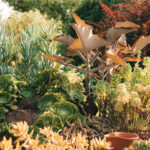 Discover the Enchanting Beauty of Ruffled Succulent Leaves
Discover the Enchanting Beauty of Ruffled Succulent LeavesAloe polyphylla, commonly known as Spiral Aloe, is an extraordinary succulent that forms a mesmerizing spiral pattern with its densely packed, symmetrical leaves. Native to the mountains of Lesotho, this rare variety requires specific growing conditions to thrive, including well-draining soil, cool temperatures, and protection from excessive moisture.
4. Aloe vera (Medicinal Aloe)
No guide to Aloe family diversity would be complete without mentioning Aloe vera, the most well-known and widely cultivated succulent. This variety is appreciated for its gel-like substance found in its leaves, which is commonly used to alleviate sunburn, moisturize the skin, and promote healing. Aloe vera requires a well-draining soil mix and moderate sunlight to flourish.
These are just a few examples of the diverse range of succulents within the Aloe family. Each variety has its own distinct beauty and specific care requirements, so be sure to research and understand the needs of the specific type of Aloe succulent you choose to grow.
Whether you're a seasoned plant enthusiast or a beginner looking to add some greenery to your space, exploring the various types of succulents within the Aloe family can be an exciting and rewarding journey.
Aloe aristata, also known as lace aloe, has distinctive white spots on its leaves
The Aloe aristata, commonly referred to as lace aloe, is a stunning succulent that belongs to the Aloe family. It is known for its unique and eye-catching features, making it a popular choice among succulent enthusiasts.
One of the most notable characteristics of the Aloe aristata is the presence of distinctive white spots on its leaves. These spots, which resemble intricate lace patterns, give the plant its common name. The contrast between the dark green color of the leaves and the white spots creates a visually striking appearance.
 Fast-Growing Succulents: Seed-Grown Varieties Revealed
Fast-Growing Succulents: Seed-Grown Varieties RevealedAside from its aesthetic appeal, the Aloe aristata is a relatively easy plant to care for, making it suitable for both beginners and experienced gardeners. It is a drought-tolerant succulent, meaning it can withstand long periods without regular watering. This makes it an ideal choice for those who tend to forget to water their plants regularly.
When it comes to sunlight requirements, the Aloe aristata thrives in bright, indirect light. It can tolerate some direct sunlight but should be protected from intense, scorching rays. Placing it near a sunny window or in a well-lit area of your garden will ensure its healthy growth.
Like other succulents, the Aloe aristata prefers well-draining soil to prevent root rot. It is recommended to use a sandy or cactus-specific soil mix to ensure proper drainage. Overwatering should be avoided, as it can lead to the onset of various issues such as root rot or fungal diseases.
Propagation of the Aloe aristata is relatively simple. It can be propagated through offsets, which are small plantlets that grow around the base of the mother plant. These offsets can be carefully separated and planted in their own pots, allowing them to develop into independent plants.
The Aloe aristata, or lace aloe, is an exquisite succulent with its distinctive white spots and easy care requirements. Whether you want to add it to your indoor collection or display it in your garden, this unique succulent is sure to captivate and enhance any space.
Aloe polyphylla, also known as spiral aloe, has leaves that grow in a unique spiral pattern
Aloe polyphylla, also known as spiral aloe, is a remarkable succulent that belongs to the Aloe family. It is characterized by its distinct spiral pattern of leaves, making it a captivating addition to any succulent collection.
The leaves of Aloe polyphylla are tightly packed and grow in a clockwise or counterclockwise spiral formation. This natural spiral pattern is visually striking and gives the plant a mesmerizing appearance. Each rosette typically consists of around 150 leaves, creating a stunning symmetrical display.
 Exploring the Fascinating World of Tree-Like Succulent Plants
Exploring the Fascinating World of Tree-Like Succulent PlantsNative to the mountains of Lesotho, a landlocked country in southern Africa, Aloe polyphylla is well-adapted to thrive in high altitudes and cooler temperatures. It requires well-draining soil and is best suited for outdoor cultivation in regions with a mild climate.
In addition to its visual appeal, Aloe polyphylla is also known for its medicinal properties. The gel inside its leaves has various therapeutic uses, such as soothing burns, moisturizing the skin, and promoting overall skin health.
If you are considering adding Aloe polyphylla to your succulent collection, it is essential to provide it with the right care. This succulent thrives in bright but indirect sunlight and prefers to be watered sparingly. Overwatering can lead to root rot, so it is crucial to let the soil dry out between waterings.
Aloe polyphylla is a rare and sought-after succulent, making it a valuable addition to any succulent enthusiast's collection. Its unique spiral growth pattern and medicinal properties make it a fascinating and rewarding plant to grow.
Aloe vera and other succulents in the aloe family are easy to care for and require minimal watering
The aloe family is known for its diverse range of succulent plants, each with its own unique characteristics and beauty. One of the most well-known members of this family is Aloe vera, which is famous for its medicinal properties.
However, there are many other types of succulents in the aloe family that are worth exploring. From small and compact varieties to large and architectural ones, there is a succulent for every taste and preference. Here are some of the most popular types:
 Spiky Succulents: A Guide to Thorny and Spiky Types
Spiky Succulents: A Guide to Thorny and Spiky TypesEcheveria
Echeverias are beloved for their rosette-shaped leaves and vibrant colors. They come in various sizes, ranging from tiny offsets to larger specimens. These succulents are perfect for adding a pop of color to your indoor or outdoor garden.
Haworthia
Haworthias are known for their unique and striking leaf patterns. With their distinctive white stripes, spots, or ridges, these succulents are a favorite among collectors. They are often small in size, making them ideal for terrariums or as desk plants.
Agave
Agaves are larger succulents that can make a bold statement in any garden. With their architectural growth habit and sharp, spiky leaves, they add a touch of drama to the landscape. These plants are also incredibly resilient and can withstand harsh conditions.
Sansevieria
Sansevierias, also known as snake plants or mother-in-law's tongue, are incredibly low-maintenance. They have long, upright leaves that are often variegated with shades of green, yellow, or silver. These succulents are known for their air-purifying qualities and can thrive in both bright and low light conditions.
Aloe aristata
Aloe aristata, also known as lace aloe, is a small succulent with unique toothed leaves. It forms attractive rosettes and produces beautiful coral-colored flowers. This aloe variety is perfect for small spaces or as part of a succulent arrangement.
- Key Points to Remember:
- There are various types of succulents in the aloe family, each with its own distinct characteristics.
- Echeverias are known for their rosette-shaped leaves and vibrant colors.
- Haworthias have unique leaf patterns with white stripes, spots, or ridges.
- Agaves are large succulents with sharp, spiky leaves and an architectural growth habit.
- Sansevierias are low-maintenance succulents with long, upright variegated leaves.
- Aloe aristata is a small succulent with toothed leaves and coral-colored flowers.
Exploring the diversity within the aloe family can be a rewarding experience for any succulent enthusiast. Whether you prefer the compact beauty of echeverias or the striking patterns of haworthias, there is a succulent to suit every taste and style.
Succulents in the aloe family can be grown both indoors and outdoors, depending on the climate
 Vibrant Blooming Outdoor Succulents: Discover Stunning Plants
Vibrant Blooming Outdoor Succulents: Discover Stunning PlantsSucculents in the aloe family are a diverse group of plants that are known for their ability to store water in their thick, fleshy leaves and stems. These plants are not only aesthetically pleasing with their unique shapes and textures, but they are also relatively low maintenance, making them a popular choice for both experienced and novice gardeners.
One of the great advantages of aloe family succulents is their versatility when it comes to their growing conditions. Depending on the specific type of succulent and the climate in which you live, they can be successfully grown both indoors and outdoors.
Indoor Aloe Family Succulents
Indoor succulents from the aloe family are well-suited for those who live in colder climates or those who don't have access to an outdoor garden. These plants thrive in bright, indirect sunlight and can be grown in small pots or containers.
When choosing indoor succulents, some popular options include:
- Aloe vera: Known for its medicinal properties, aloe vera is a versatile succulent that can be grown indoors. It requires bright, indirect sunlight and well-draining soil.
- Haworthia: With its attractive rosette-shaped leaves, haworthia is a popular choice for indoor gardens. It prefers bright but indirect sunlight and well-draining soil.
- Gasteria: Gasteria succulents have thick, triangular leaves that give them a unique appearance. They can tolerate lower light conditions and are well-suited for indoor growing.
Outdoor Aloe Family Succulents
For those fortunate enough to live in warmer climates, outdoor cultivation of aloe family succulents is possible. These plants thrive in full sunlight and well-draining soil, making them ideal for rock gardens, borders, or containers on your patio.
Some popular outdoor succulents from the aloe family include:
- Agave: Agave plants are known for their striking architectural forms and come in a variety of shapes and sizes. They are perfect for adding a dramatic focal point to your outdoor garden.
- Aeonium: Aeonium succulents have rosette-shaped leaves that can vary in color from green to burgundy. They are ideal for adding a splash of color to your outdoor garden.
- Echeveria: Echeveria succulents are known for their attractive rosette-shaped leaves that come in a wide range of colors and textures. They are a popular choice for outdoor containers and rock gardens.
When growing outdoor succulents, it's important to consider the specific climate and temperature requirements of each plant. Some succulents are more cold-hardy than others, so it's essential to choose varieties that are suitable for your region.
 Discover the Perfect Buddha Temple Succulent for Your Home
Discover the Perfect Buddha Temple Succulent for Your HomeWhether you opt for indoor or outdoor cultivation, aloe family succulents are sure to add beauty and interest to your garden or indoor space. With their unique shapes, vibrant colors, and water-storing abilities, these plants are a delightful addition to any plant collection.
Aloe vera and other succulents in the aloe family make great additions to any plant collection
When it comes to adding diversity to your plant collection, look no further than the aloe family. This fascinating group of plants, known for their succulent leaves and stunning blooms, offers a wide range of options for both indoor and outdoor gardening enthusiasts.
Types of Succulents in the Aloe Family
The aloe family, also known as the Asphodelaceae family, encompasses various succulent plants that are native to different regions around the world. Here are some popular types of succulents in this diverse family:
- Aloe vera: Perhaps the most well-known succulent in the aloe family, Aloe vera is prized for its medicinal properties and ability to soothe sunburns. This versatile plant features fleshy, green leaves with serrated edges.
- Haworthia: Haworthia plants are known for their rosette-like arrangement of thick, pointed leaves. These small succulents come in a variety of shapes and patterns, making them a favorite among collectors.
- Gasteria: Gasteria plants are characterized by their thick, tongue-shaped leaves with unique patterns and textures. They are generally smaller in size and make excellent additions to indoor succulent gardens.
- Aloinopsis: Aloinopsis succulents are native to South Africa and are known for their distinctive, star-shaped rosettes. These plants often display vibrant colors and produce eye-catching flowers.
- Kalanchoe: Although not exclusively part of the aloe family, many Kalanchoe species are closely related. These succulents are known for their thick, fleshy leaves and vibrant flowers that add a burst of color to any garden.
These are just a few examples of the diverse range of succulents within the aloe family. Each type has its own unique characteristics, making them a joy to collect and care for.
Caring for Succulents in the Aloe Family
While succulents in the aloe family are known for their ability to tolerate dry conditions, proper care is still essential for their health and longevity. Here are some general tips for caring for these fascinating plants:
- Light: Most succulents in the aloe family thrive in bright, indirect light. Place them near a sunny window or provide them with a few hours of filtered sunlight each day.
- Watering: Succulents have unique water requirements. Allow the soil to dry out completely between waterings, and avoid overwatering, as it can cause root rot. Remember, it's better to underwater than to overwater.
- Well-draining soil: Use a well-draining soil mix specifically formulated for succulents to prevent waterlogged roots. Adding perlite or sand to the soil can further improve drainage.
- Temperature: Most succulents prefer warm temperatures between 60°F and 80°F (15°C to 27°C). Protect them from frost and extreme heat, as it can damage their leaves.
- Propagation: Succulents in the aloe family can be propagated through various methods, including leaf cuttings and offsets. Research the specific propagation techniques for each type of succulent to ensure success.
By following these care tips, you can enjoy a thriving collection of succulents from the aloe family. Their unique shapes, colors, and textures will undoubtedly add beauty and diversity to your plant collection.
Whether you're a beginner or an experienced gardener, exploring the world of aloe family succulents is a rewarding journey. Start your collection today and discover the wonders of these fascinating plants!
Frequently Asked Questions
1. What are succulents?
Succulents are a group of plants that have adapted to arid environments by storing water in their leaves, stems, or roots, allowing them to survive in dry conditions.
2. Are all succulents in the Aloe family?
No, not all succulents belong to the Aloe family. The Aloe family, also known as the Asphodelaceae family, includes plants like Aloe vera, Haworthia, and Gasteria, but there are many other succulent families as well.
3. How do I care for succulents?
Succulents require well-draining soil, plenty of sunlight, and infrequent watering. They are low-maintenance plants, but it's important not to overwater them as it can lead to root rot.
4. Can I propagate succulents?
Yes, succulents can be easily propagated through methods like leaf cuttings, stem cuttings, or offsets. Each method has its own requirements, but overall, succulents are quite easy to propagate.
If you want to read more articles similar to Guide to Aloe Family Diversity: Types of Succulents, you can visit the Varieties and Colors category.


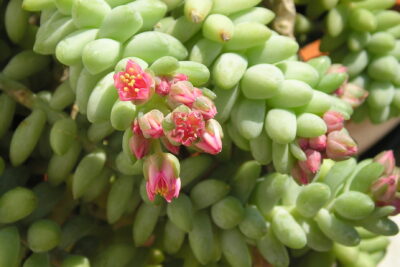



You Must Read